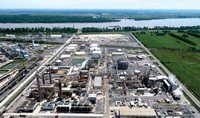Advertisement
Grab your lab coat. Let's get started
Welcome!
Welcome!
Create an account below to get 6 C&EN articles per month, receive newsletters and more - all free.
It seems this is your first time logging in online. Please enter the following information to continue.
As an ACS member you automatically get access to this site. All we need is few more details to create your reading experience.
Not you? Sign in with a different account.
Not you? Sign in with a different account.
ERROR 1
ERROR 1
ERROR 2
ERROR 2
ERROR 2
ERROR 2
ERROR 2
Password and Confirm password must match.
If you have an ACS member number, please enter it here so we can link this account to your membership. (optional)
ERROR 2
ACS values your privacy. By submitting your information, you are gaining access to C&EN and subscribing to our weekly newsletter. We use the information you provide to make your reading experience better, and we will never sell your data to third party members.
Business
Expensive inputs and strong demand send fertilizer prices through the roof
Fertilizer companies expect prices to keep rising for months
by Matt Blois
November 17, 2021
Strong demand and the high cost of raw materials have dramatically increased the price of fertilizer in 2021.
In Illinois, the price of diammonium phosphate, the most widely used phosphate fertilizer, rose by more than 78% over the past year, according to a Nov. 4 report from the US Department of Agriculture. The price of two nitrogen-based fertilizers, anhydrous ammonia and urea, more than doubled over the same period. Much of the price increase has happened since the beginning of October.
Cost Curve

The cost of natural gas, which is used to make many fertilizers, has been increasing, especially in continental Europe and the UK. In addition, Hurricane Ida shut down some fertilizer production in the US earlier this year. And power outages caused problems for fertilizer plants in China, prompting the country to start discouraging fertilizer exports to protect its own supply.
On earnings calls in early November, executives at the US fertilizer makers CF Industries, Mosaic, and Nutrien said all of those factors contributed to the recent spike in fertilizer prices.
On the other side of the equation, prices for major crops like corn and soybeans are also very high right now. Gary Schnitkey, an economist at the University of Illinois who analyzes farming costs, says farmers are eager to take advantage of those prices, which is increasing demand for fertilizer to be used this fall and next spring.
Rising fertilizer prices are stacked on top of increasing prices for herbicides, land, and labor, Schnitkey says. However, fertilizer executives downplay the risk that high prices will dampen fertilizer use.
“Farmers like to farm,” Mosaic CEO Joc O’Rourke said during a conference call. “They’re not going to sacrifice yield by not fertilizing. That is not a good economic solution to the problem.”
Schnitkey disagrees. In the Midwestern US, he says, the math suggests farmers should reduce their fertilizer use to make more money, and he believes they will. “When all prices are going up, the tendency is to be more prudent in your input use,” he says.
The big question now is how long the high prices will last. Nutrien CEO Mayo Schmidt said he expects that nitrogen fertilizers will be expensive through June 2022 and potentially longer. He said his company and others plan to increase nitrogen production, but it won’t be enough to keep up with expanding demand.
In a weekly report on farm economics, Schnitkey noted that manufacturers have big incentives to produce more fertilizer, which could lower prices. But the price will also depend on more unpredictable factors, like the state of the COVID-19 pandemic and the cost of natural gas.




Join the conversation
Contact the reporter
Submit a Letter to the Editor for publication
Engage with us on Twitter